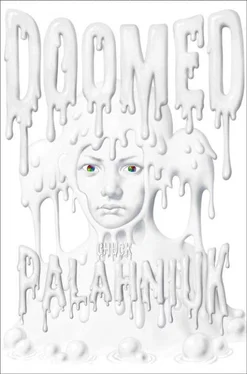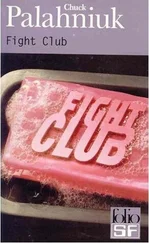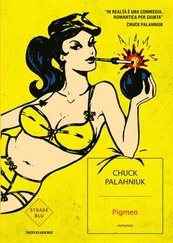From a distance, it’s a heavenly paradise. Here are the baroque turrets and domes you imagine among cumulus clouds as you lie on your back in a Tanzanian meadow during Easter recess. Not that we celebrated Easter. Yes, I hunted for the requisite dyed eggs, but my parents told me these had been hidden by Barney Frank, who also furnished me an annual oversize basket of carob treats. Not that my mom ever allowed fatty, pig-pig me to actually eat that carob. Not that anyone really likes carob.
In my folks’ puffed-plastic dreamscape, looming tall are white spires cresting above bowers of white roses, arches and buttresses, courtyards and gateways bright as spun sugar. It’s the white your tongue sees when you lick vanilla ice cream. Approaching the coastline of Madlantis you can discern white ravines and peaks. Before us are reconstituted plastics, seared by high-temperature blasts of air until they look polished. Glazed to glassy smoothness, these pinnacles and slopes aren’t subject to geological physics. In a dreamscape, a Maxfield Parrish arcadia: They rise impossibly steep, sheer faces of shining ivory that jut straight up from white beaches as slick as a mirror. Bright as klieg lights.
And yes, I might be a carob-gobbling, sucrose-addicted tubby, chubby dead girl, but I know the word Arcadian . I also know a louche tax dodge when I see one.
In the reverse of previous continents, Madlantis existed as maps before it existed as peaks and valleys. This puffed-and-blanched, polygarbage terrain, every slope and crag was planned and modeled by artists, diagrammed on blueprints prior to its creation. Preconceived. Predestined. Every square inch predetermined.
The opposite of tabula rasa.
As they’d believed in the harmonic convergence of the planets and in pyramid power, so did Camille and Antonio promote this virgin continent as a New Atlantis.
Madlantis.
It’s doubtful you can fly high enough to notice, but the overall shape of the continent is no mere accident of nature. The stretches of coastline and occasional bays aren’t shaped by river systems. No, from outer space you can see how the new landmass is shaped like a human head in profile. The severed neck is oriented toward the south, the crown of the head toward the north. This milk-white, alabaster-white profile forms an enormous cameo surrounded by the cerulean blue of the Pacific Ocean. This Brobdingnagian silhouette, its saggy double chin dwarfs the nearby islands of Japan. The nape of its fatty neck crowds northern California, while its chipmunk cheeks threaten to block the shipping lanes above Hawaii. Needless to say, the newly minted continent of Madlantis was sculpted to look exactly like me.
Seen from outer space, the Earth now resembles nothing so much as a giant coin struck with my likeness. This is the satellite image I’d seen on television monitors and magazine covers at LAX. Here is the white plastic Heaven on Earth named in my honor.
A roundish, landlocked sea serves as my eye. On the opposite shoreline, rambling plastic glaciers suggest the strands of my unruly hair. And despite the fact that the whole is not particularly flattering, it is accurate. It’s me but on a gigantic scale. If you asked my mother, she’d tell you that it’s only slightly larger than life-size. My grieving parents would tell you that they’d conceived of this unheralded experiment in plastic reclamation as a staggering tribute to my memory. To finance their endeavor with public money corralled from every government in the world, my dad promised that it would serve to contain all the petrol-product debris of humanity. Its whiteness would reflect solar heat away from the planet and counteract climate change. Because it floated, the continent could even be towed north to serve as subsidized housing for displaced polar bears. Politicians flocked to support the endeavor.
In actuality, now that it’s complete, Mr. Ketamine informs me that the land’s handful of physical residents is already in international court suing for their independence as a sovereign nation. It’s no coincidence that these patriotic zealots—known as “Madlantians,” and seeking freedom from colonialist oppressors—they are also the wealthiest people in the world, and that under the freshly inked constitution of Madlantis none of them will be subject to taxes upon their lofty incomes. Neither will inheritances be taxed. In addition, this small cadre of residents will all be named ambassadors of their plastic nation and therefore be granted the freedom of diplomatic immunity in all their international treks. That, Gentle Tweeter, is my parents’ noble dream: infinite money and infinite freedom. Every major corporation in the world is scrambling to relocate its headquarters there.
By now we’ve crossed into Madlantian airspace. We’re skimming above white plastic mountaintops. We’re careening through white plastic valleys. Ahead lies a speck of not-whiteness. Located at the approximate center of my vast global, fat-girl profile is a ship. Mired there, in a whorled pit that suggests the opening of my auditory canal—my ear hole, according to Orthodox Christians, the orifice through which the Holy Spirit impregnated the Virgin—locked in this wasteland as effectively as any explorer’s vessel crushed by advancing ice—or as Satan trapped in Dante’s icy lake—there is my parents’ megayacht, the Pangaea Crusader .
DECEMBER 21, 12:15 P.M. HAST
At Home with Camille Spencer
Posted by Madisonspencer@aftrlife.hell
Gentle Tweeter,
Don’t imagine for a moment that solar panels and wave energy power any portion of this thunderous helicopter, and approximately a million gallons of dinosaur juice later we set down atop the Pangaea Crusader . Ah, the imperial seagoing palais that is the Crusader … Despite the fact that the vessel is virtually an oceangoing space station, painted a gleaming, arctic white and only slightly smaller than Long Island, the Crusader ’s central salon has been decorated to simulate the interior of a typical shantytown hovel found among the favelas of most Third World megalopolises. Were it not for the fact that we’re rocking gently, rolling smoothly atop salty Pacific swells, the yacht’s interior could be located in the primitive outskirts of Soweto or Rio de Janeiro.
Through the magic of fiberglass and trompe l’oeil painting, one bulkhead of the salon appears to be a wall of crumbling, asbestos-infused cinder block. To this, the world’s leading graffiti artists have hand-applied layer upon layer of gang tags using faux-lead-based spray paint. The overall impression is one of menace, a sympathetic political oneness with the world’s violent masses, not unlike the sordid interior of a men’s comfort station situated along a densely traveled highway in tedious upstate.
In answer to HadesBrainiacLeonard, yes, this does feel like an awful lot of scene setting, but please bear with me. We’re approaching a poignant episode, a prodigal child returning to the seminurturing bosom of her mother. Thus I focus on the set dressing only because I’m not prepared for the depth of emotion I’m about to suffer.
Eventually, he of the flailing, not-clean pigtail, Mr. Crescent City presents himself before my mom in the yacht’s spacious main salon. Unseen, I accompany him for this audience.
Even as I’m posting this, my mom’s clutching a tall glass of cherry-flavored cough syrup mixed with an equal part of dark rum, garnished with a dagger of fresh organic pineapple and three maraschino cherries skewered on the balsa-wood stem of a living-wage paper parasol fashioned by dusky hands enabled through first-world microfinancing.
For someone who protests environmental degradation, it’s ironic that my mother is always so polluted herself. It doesn’t help that I’m sitting next to her. My ghost self is close enough to share a photo caption with her in People magazine, but she’s still completely not seeing me.
Читать дальше





